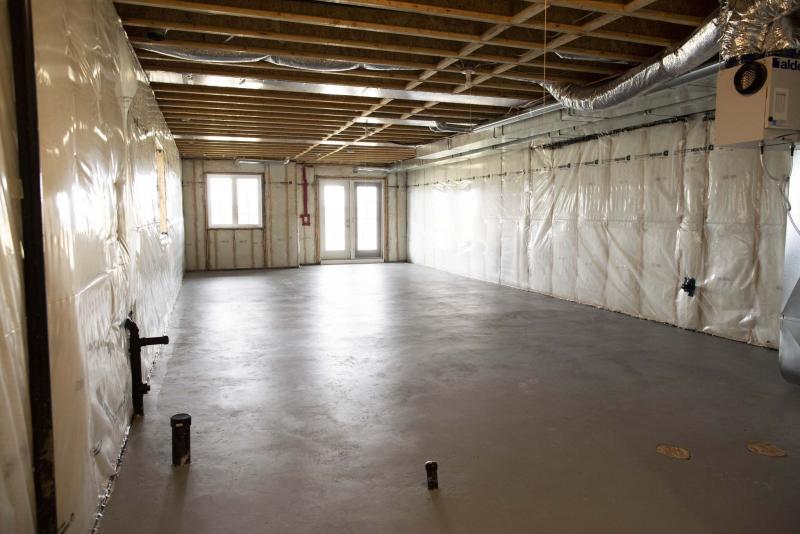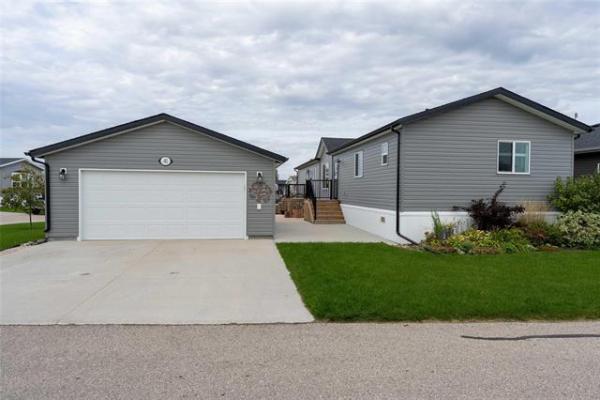Question: My sister lives south of Winnipeg, out of the flood plain. The home is about 35 years old and is built on piers or piles. The basement floor is sinking on one side of the home, as much as two inches in the corner. Some doors are also not closing. Any ideas on how to fix this problem? She is planning to sell the home and does not want the purchaser to have the same problems. I suspect the previous owners were well aware of this problem and never disclosed it.
Thanks for any help.
— Chris
Answer: Movement in our homes is all too common in southern Manitoba, especially in the last decade with very dry summers. Dealing with this issue may be to adjust and trim various components, just as the previous owners have done, and live with the movement.
The only alternative is major structural repairs and replacement of the basement floor slab, which may be outside a typical homeowner’s budget.
Before we address general recommendations for the movement in the home, we have to establish whether the movement is all in a finished basement or in the entire home.
If the jamming doors and other issues are all in the basement, there is little that can or needs to be done.
Concrete basement floor slab movement is inevitable because of the soil conditions and methods of construction in our area.
Because our soil is expansive clay, it can expand and contract with changes in moisture and temperature. Below a typical basement floor slab are a few inches of loose pea gravel above the clay base. This type of stone is used in this area for a couple of reasons.
Firstly, it drains well, so excessive moisture in this area will not lead to serious moisture issues. Secondly, this granular material is fairly flexible, which allows for some movement without damage to components below the floor.
The portion of the basement floor that has sunk may have better or worse drainage than other areas, leading to movement in the clay soil beneath. Looking at the grading and drainage outside the foundation may provide some answers.
If the soil has shrunken away from the foundation in some areas, or if there are depressed sections, these should be filled in with topsoil to even them out.
Alternatively, if there are locations outside the home that are too high, grading toward the foundation, these should be levelled to prevent collecting water unevenly outside the home.
Other than improvements with grading and water management from eavestroughs and sump pump hoses, there may be little which can be done for a heaving or sinking basement floor slab. There is likely more movement occurring than just the floor, otherwise the previous telepost adjustments would not be necessary.
Trimming basement walls may be required if the floor has badly heaved, but otherwise the upper floors of the home should not be seriously affected by floor slab movement, if the house is indeed piled.
If the movement is all in the basement, there should be little additional structural movement and periodic trimming of walls and doors may be all that can be done.
The movement may be more involved and the claims of the house being built on piles or piers may be false.
It may be difficult to verify this, but if the upper floors and doors on those levels are moving, it is unlikely the foundation or the teleposts are piled. Unless the pilings have failed, or are too shallow, there should be little movement in the foundation or the supports under the teleposts.
Movement, cracking and sometimes sinking is all too common for concrete basement floor slabs in our area and not much can be done about it.
If the movement is also seen in other areas in the house, such as floors and doors on the main and upper levels, then trimming and regular telepost adjustment will be needed as the home may not be fully supported by pilings, as purported.
Ari Marantz is the owner of Trained Eye Home Inspection Ltd. and the past president of the Canadian Association of Home & Property Inspectors — Manitoba (cahpi.mb.ca). Questions can be emailed to the address below. Ari can be reached at 204-291-5358 or check out his website at trainedeye.ca.
trainedeye@iname.com




